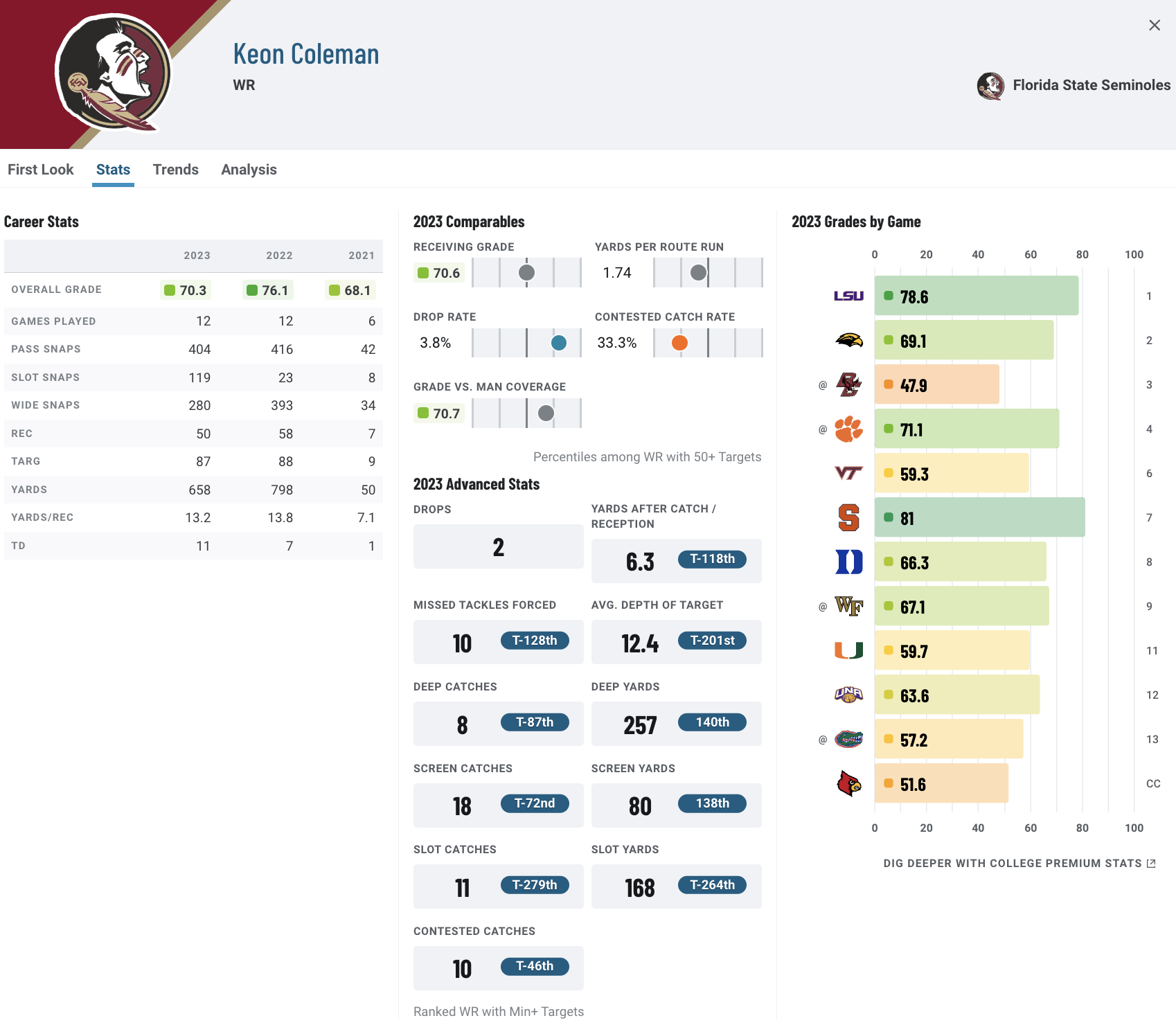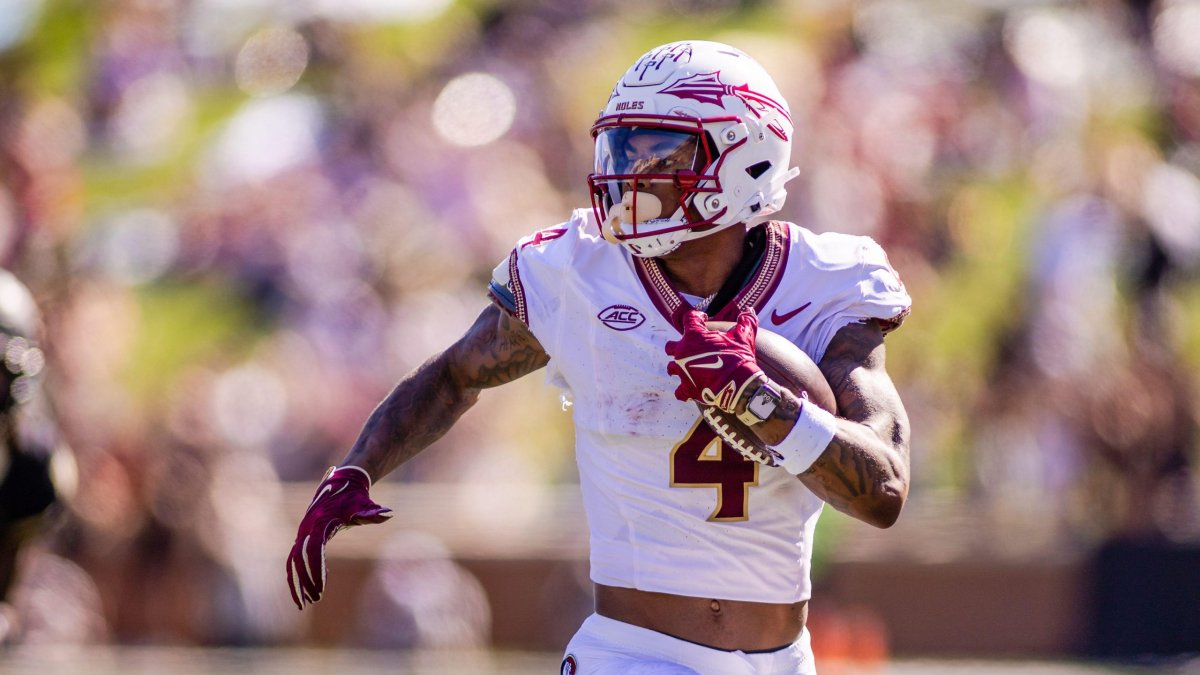The 2024 NFL Draft is fast approaching. The PFF big board is live, mock draft season is in full swing and the 2024 NFL Scouting Combine has wrapped up.
This year's crop of wide receiver prospects showcases some potential NFL stars, with Ohio State star Marvin Harrison Jr. emerging as the standout. Behind Harrison, we have LSU’s Malik Nabers and Washington’s Rome Odunze, who are top-10 prospects in this class.
It’s a good time for NFL teams to need receiver help.
Let's look at Florida State‘s Keon Coleman, who played both basketball and football at Michigan State before transferring to Florida State.
Click here for more draft tools:
2024 Mock Draft Simulator | 2024 Big Board | 2024 Draft Guide
2024 Player Profiles | 2024 Mock Drafts | NCAA Premium Stats
SCOUTING SUMMARY
Coleman originally committed to Michigan State as a two-sport athlete and transferred to Florida State in 2023. His evaluation is a test of how much scouts prefer contested-catch receivers to athletic separators. He is an impressive 6-foot-4, 215-pound athlete who enjoys getting physical with cornerbacks, as he constantly catches passes through contact.
While that yields jaw-dropping feats of strength, his lack of separation ability is concerning for the next level—there just aren't many guys who make a living as consistent contested-catch receivers, and the ones who do are often some of the best receivers in the league.

WINS ABOVE AVERAGE
WAA represents the number of wins a player is worth over an average college football player and is a metric that evaluators can utilize to assess performance. It combines how well a player performed in each facet of play (using PFF grades) and how valuable each facet is to winning football games. The result is a first-of-its-kind metric that allows for cross-positional valuation and predicts future value at the player and team levels.
HOW COLEMAN RANKS IN THE STABLE METRICS
Receiving grades are relatively stable from year to year, but there is always some level of dependency on quarterback play when evaluating receivers. Isolating receivers against single coverage versus zone is informative, as it shows how much was earned in one-on-one situations compared to more scheme-driven production. Advanced data shows how open receivers are on their targeted routes, and separation percentage is one way to isolate the receiver away from his quarterback.
As far as advanced stats go, yards per route run (YPRR) is one of the best measures of a wide receiver’s production, as it takes into account how well he takes advantage of his opportunities.
Average depth of target (aDOT) and yards after the catch per reception are informative about a receiver’s usage pattern, and his after-the-catch expectations are directly affected by how far down the field he is targeted. Both numbers are as much about style as they are about production.
Compared to other players with PFF college data, Coleman’s metrics in the most predictive of data subsets measured up below average.
Coleman had his most successful season in 2022 when he hauled in 62.5% of his contested targets. Despite not being a stable metric year over year, the FSU product uses his big frame very well in contested situations.
He also has a career 4.1% drop rate, which ranks in the 92nd percentile among all receivers over that time.
COLEMAN’S PROJECTIONS
Here are Coleman’s rookie-year projections for yards per reception and completion percentage in an offense that likes to push the ball downfield.
Let’s look at how Coleman does in an offense that relies on a quick, underneath passing game.
BOTTOM LINE FROM PFF's 2024 NFL DRAFT GUIDE
Coleman is a top-tier athlete for the position from an explosiveness standpoint. His burst, top speed and leaping ability are All-Pro caliber.
However, the lack of agility in his game limits his route tree and ability to separate from defensive backs. Those who love above-the-rim, alpha-type receivers will be big fans, but his inability to consistently separate means he won't be for everyone.




 © 2025 PFF - all rights reserved.
© 2025 PFF - all rights reserved.